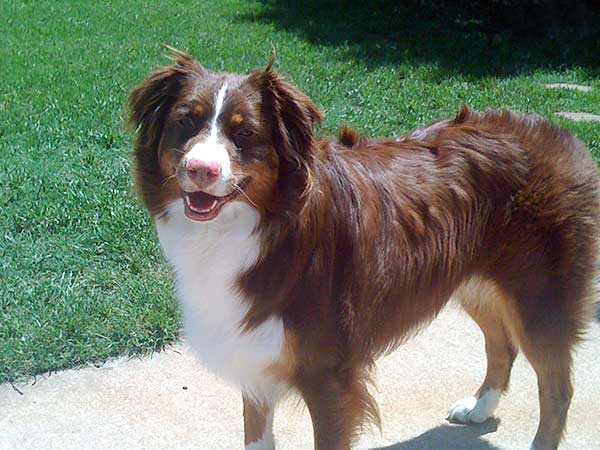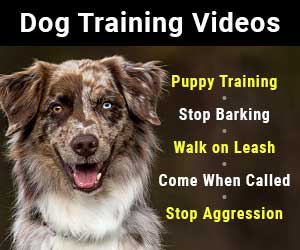
First Aid for Dog Bites
First aid for dog bites is often the only treatment necessary. However, there are several situations in which you should call your doctor or visit the local emergency room. We'll look at those first.
When To Call A Doctor Or Seek Medical Attention
Deep, gaping bites that continue to bleed for 15 minutes or more even after pressure is applied should be evaluated by a physician. You may need stitches to close the wound. Bites on the face should be treated professionally to reduce the risk of scarring. Bites on the hands or feet should be evaluated for nerve and bone damage. If left untreated, the damage could cause chronic pain or disabilities.
If you have a pre-existing health problem such as diabetes, you should seek medical attention. Any condition that weakens your immune system reduces your body's ability to fight infection.

Jan Hughes
This is Abby our red tri female. She lives for ball playing in our backyard and has just learned how to smile.
Signs of infection may not occur for several days. It is important to clean the wound regularly and watch for swelling or pus. If you have a fever, you should consult your doctor.
If your last tetanus shot was over 5 years ago, you will need to visit your doctor for a booster shot. Finally, if the dog's owners are unknown, you should seek medical attention immediately due to the risk of rabies.
Basic Dog Bite First Aid
The basic first aid for dog bites is not unlike what should be used for treating any other wound. The area should be washed gently with soap and warm water.
A clean towel should be used to dry the injured area. The same towel can be used to apply pressure and stop the bleeding. Try to select a towel that will not leave lint or other residue on the wound.
Antibiotic ointment should be applied once the bleeding has stopped or nearly stopped. A regular band-aid or other sterile bandage can then be applied.
Cold compresses and elevation can be used to reduce swelling. Warm compresses can be used to reduce pain, improve circulation and speed healing.
The bandage should be changed twice a day. Antibiotic ointment should be reapplied at the same time.
After first aid for dog bites be sure to keep the area clean to help reduce your risk of infection. Changing the bandage regularly allows you to check for signs of infection.
Items To Include In Your Dog Bite First Aid Kit
Pet owners are wise to keep a special kit in case someone in the family or a visiting friend is bitten. The basic necessities are the same as those that would be found in any kit, but by designating the kit for bites only, you can be sure to have bandages and antibiotic ointment on hand in the event of an emergency.
More Advice About First Aid For Dog Bites
It is important to be aware that all dogs will bite. It is their natural tendency. Some animals are more likely to be aggressive than others. Certain breeds are sometimes named as more likely to be aggressive. Others are simply more likely to cause serious injury requiring more than the basic dog bite first aid.
The Bull Terrier and Rottweiler are examples of breeds that have a very strong jaw. It tends to lock closed when they bite down. A person's natural instinct would be to pull away from the jaws. That can cause tearing of flesh and tissue. If you are present at the time of the incident, you can try to get the animal to release the pressure by getting his attention off of the victim.
Australian Shepherds and other herding species nip, rather than biting down and holding the prey. They were bred to nip at the heels of other animals without causing injury. First aid for dog bites of that kind is easy and usually sufficient. They might break the skin, but are not likely to do much damage.
Have Dog Training Questions?
Check out these introductory dog training videos...
I want my dog to stop being aggressive.
I want some help training my new puppy.
I want my dog to stop barking at everything.
Get Australian Shepherd Info, Website Updates, Special Offers, and Cartoons...
FREE GIFT
You'll also receive a free copy of the ebook
My Everyday Dog Training Tools
by professional dog trainer Daniel Abdelnoor, "Doggy Dan"












 Loading Image...
Loading Image...